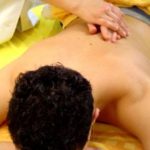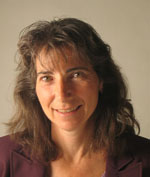
Touch can open up more than muscles
by Karen Kreps
During a recent session, my massage therapist reminded me of the teachings of Ida Rolf. In the course of our conversation, a great deal that I once knew and intuitively understood about the structure of my body and mind came back from the forgotten recesses of consciousness.
Rolf received her PhD in biochemistry from Columbia University in 1920 and furthered her knowledge of the body through her scientific work in organic chemistry at the Rockefeller Institute. She devoted her life to creating a holistic system of soft-tissue manipulation and movement education that was named Rolfing. The soft tissue includes muscles, tendons, ligaments and fascia. Fascia is the thin membrane that holds the body together. It serves as a web that gives support and allows freedom of muscular motion.
Rolfers claim that their work contributes to more efficient use of the muscles, allows the body to conserve energy and creates more economical and refined patterns of movement. Rolfing is based on the notion that emotional as well as physical health depends upon being properly aligned. By being properly aligned, gravity enhances personal energy and leads to a healthy body and emotional state.
Here’s how my massage therapist explained it: Throughout our lives, when we experience pain, loss and disappointment, we hold on tighter to what is left—as if that would protect us. We tighten up, contract, preparing to flee or fight. This behavior is described in various ways. We “grit our teeth.” We “get a grip.” We “circle the wagons.” We become afraid to love, afraid of the vulnerability without which love is not possible.
All this translates into physical tension that is manifest in our bodies. When one part of the body is contracted, another part becomes stretched in compensation and must strain so that we can function in an upright manner. We grow so accustomed to the inner holding and the structural imbalance that it seems normal to us. We develop strong habits that inhibit our movements. These habits are very difficult to break.
Most of us don’t even know we have these self-destructive holding habits. We may just feel angry, tense, stressed or depressed. Some people have it worse than others. Those poor souls get nasty, spreading their anger inappropriately and perpetuating the vicious cycle. Others, including myself, have had the good fortune to develop some self-awareness and to turn things around. As we become aware of how we have held onto our mistakes, we can learn to gradually let go of them and to stop punishing ourselves on their account.
The process of reeducation teaches us how we have built emotional walls around ourselves and developed rigid musculature that blocks the flow of synovial fluid through our joints. Emotionally, we retreat into virtual castles that isolate us from others. We think the castle walls protect us from harm, but in reality they make us lonely and defensive. They shut off love.
Everything my massage therapist told me rang true. It fit my experience. I remembered how, throughout my childhood, adolescence and young-adult days, I would recover from a hurt, a broken heart, by growing calloused. Each lost love brought another layer of emotional scarring. I felt it pile on, and it did not feel good. At first, I told myself it didn’t matter. I was young and resilient. I would bounce back. But, over time, bounciness diminished.
As a callous grew over my heart, the less I felt like living. It became harder to move. I lost flexibility. If this had kept up, I would have eventually shut down.
Conscious of the challenge that life presented to me, I have for along time sought to undo the damage. Rolf called this “Structural Integration.”
I am deeply grateful for the help I have received that enables me to reverse the pattern. Many tools are at my disposal: yoga, meditation, therapy, personal growth seminars, Rolfing, and massage. Other tools exist that I have yet to discover.
For me, these presented a ray of sunshine that filtered into my darkness and showed me that my fears and attachments were piddling in light of a greater truth: that separation is an illusion and that we are all connected. My attachments were what brought me pain. By letting go of what I thought was mine—all that stuff I thought I needed to hold onto—and by opening up to what life brought my way, I discovered power and the freedom of self-determination. I am gradually learning to exercise my innate ability to live openly and to trust the process of life.
Every person creates an individual response, my massage therapist told me. No one develops blocks in exactly the same way. He observed that I carried a lot of high tension in my body as the result of my personal response to grief.
He told me that when he worked on me, he could feel my grief and how I held it deep within. He could not take it from me. He said the healing always comes from within. All he or any other therapist could do is to point the way.
This, too, rang with truth. I’d learned the same thing in yoga and in therapy. All I had to do was to allow healing by ceasing to block the flow of life through my being.
I am so grateful for this understanding and for the great tools I have been given. I know I’ll be using them for the rest of my life as I learn, bit by bit, to be open and loving.


